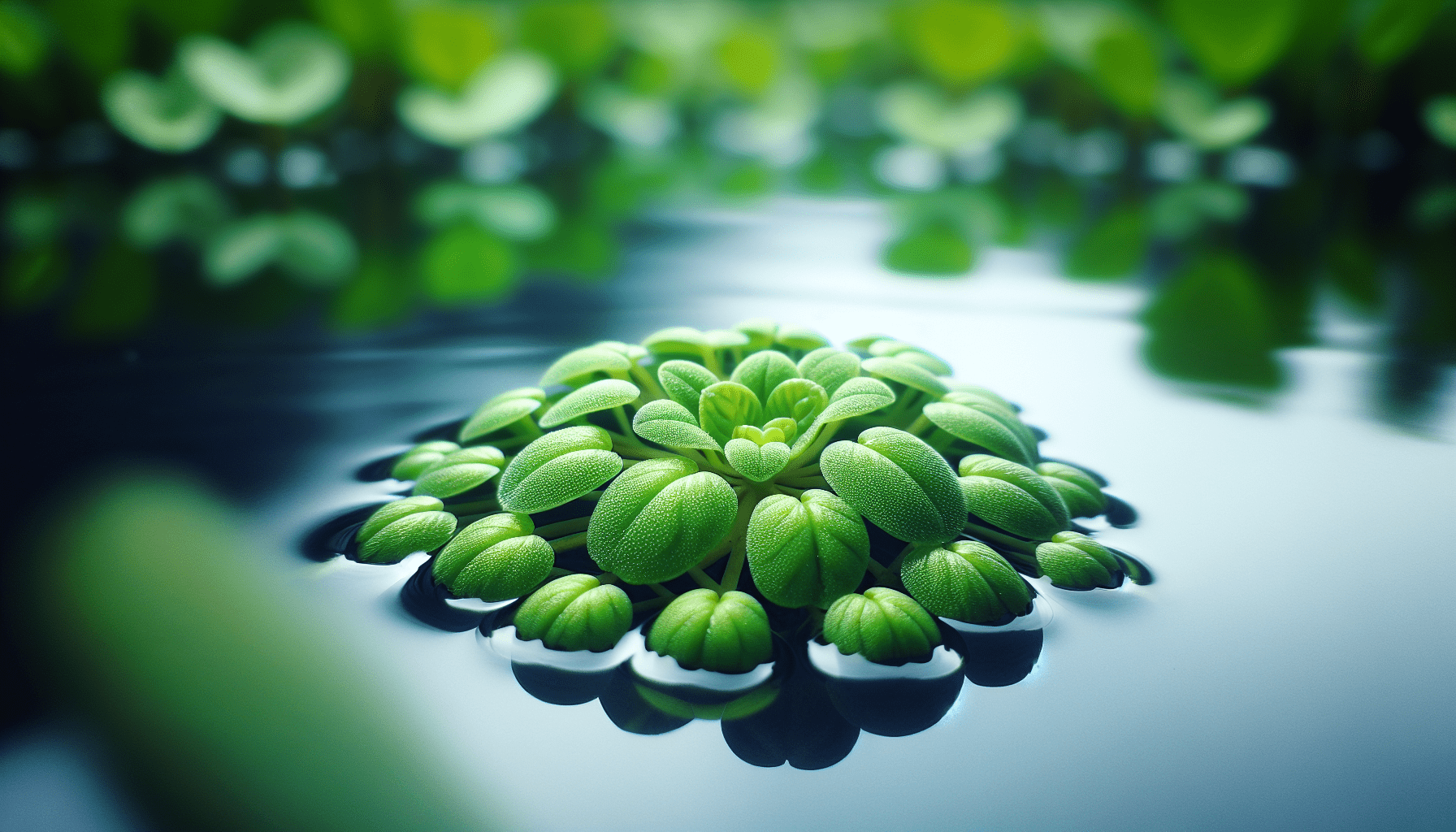As an individual dedicated to expanding your knowledge of aquatic flora, understanding the nuances of the numerous plant species you encounter is of utmost importance. This discursive rendition sets focus on one such aquatic plant, Lemna Minuta, more commonly known as the Least Duckweed. In the subsequent analyses, you will become more acquainted with this diminutive, yet influential aquatic weed, exploring its characteristics, habitat, and the unique role it assumes within its ecosystem.

Description of Lemna Minuta
Lemna Minuta, also known as the minute duckweed, belongs to the Lemnaceae family of aquatic plants.
Overview of physical features
You may identify Lemna Minuta by its very small floating leaves, usually just 1-2 mm in size. The leaves are green, flat, and ovate with a shiny upper surface. Root structure is simple – typically, a single root descends from each leaf frond’s center.
Its natural habitat
Lemna Minuta is native to the Americas, where it thrives in slow-moving or stagnant freshwater habitats. This includes ponds, marshes, and sluggish streams. It often forms dense mats on the water surface, an adaptation that enables it to utilize the abundant sunlight and air available in its unsurpassed position on the water’s surface.
Taxonomy of Lemna Minuta
Classification details
As a member of the kingdom Plantae, Lemna Minuta is grouped under the division Tracheophyta, comprising vascular plants. Falling under the order Alismatales, it is part of the family Lemnaceae and the genus Lemna. The species identifier is Minuta.
Species closely related to Lemna Minuta
Close relatives include other species within the Lemna genus such as L. gibba, L. perpusilla, and L. aequinoctialis. These species too, are commonly found in stagnant or slow-moving freshwater bodies.
Growth Characteristics of Lemna Minuta
Rate of growth
Lemna Minuta has a fast growth rate, especially under favorable conditions.
Conditions necessary for growth
Optimal growth occurs under high light intensity, warm temperatures, and an abundance of nutrients. It can survive in a wide pH range but generally prefers neutral to slightly acidic conditions. It also needs stagnant or slow-moving water bodies as brisk water currents may inhibit its growth.

Nutrient Requirements of Lemna Minuta
Type of nutrients required
Lemna Minuta requires basic plant nutrients, including the essential macronutrients nitrogen, phosphorus, and potassium. It may also benefit from micronutrients like zinc, copper, manganese, and boron.
Quantity of nutrients required
The nutrient requirements are typically high and are predominantly taken up from the water body in which the plant populates. They can grow profusely where nutrient concentrations, particularly of nitrogen and phosphorous, are high.
Reproduction in Lemna Minuta
Ways of reproduction
Lemna Minuta reproduces asexually. Buds appear at the base of the fronds and, once mature, they break off to grow as separate entities.
Conditions required for reproduction
Reproduction tends to be rapid under favorable conditions – high nutrient concentration, ample light, and warm temperatures.
Role of Lemna Minuta in Ecosystem
Role in nutrient cycle
Lemna Minuta plays a valuable role in nutrient cycling, particularly nitrogen and phosphorus. By absorbing these nutrients in excess, it can help reduce eutrophication in nutrient-enriched waters.
Role in food chain
Lemna Minuta forms an important part of the food chain in aquatic ecosystems. Various water birds, crustaceans, or fishes use it as a food source due to its high protein content.
Impact of Lemna Minuta on Biodiversity
Positive Impacts on Biodiversity
By providing habitat and food for a range of organisms, Lemna Minuta helps enhance biodiversity in aquatic systems.
Negative Impacts on Biodiversity
If growth becomes too prolific, it may lead to problems. Dense mats can impede light penetration into the water, thus limiting photosynthesis for sub-surface plants. Similarly, dense stands can reduce oxygen concentrations in the water, leading to mortality in fishes or other aquatic organisms.
Methods of Controlling Growth of Lemna Minuta
Mechanical methods
Mechanical control methods involve the physical removal of the weed from the water. This can be accomplished using rakes, skimmers, or other types of harvesting equipment.
Chemical methods
Chemical herbicides approved for aquatic use can be employed to manage this weed. However, it’s essential to use them judiciously as they can negatively impact non-target organisms.
Biological methods
Biological control agents like weevils, moths, and fungi have shown promise in managing Lemna Minuta populations. Ducks and other waterfowl may also help, as they actively feed on these plants.
Benefits and Uses of Lemna Minuta
Nutritional value
The high protein content in Lemna Minuta means it has potential as a source of protein in animal feeds.
Medicinal Use
While not traditionally recognized as a medicinal plant, recent studies have shown that Lemna Minuta extract has significant antioxidant and antimicrobial properties, signifying potential for therapeutic use.
Potential use in biotechnology
With its rapid growth and ability to thrive in nutrient-rich situations, Lemna Minuta shows promise for use in biotechnology for creating biofuels and biofertilizers.
Threats and Challenges Posed by Lemna Minuta
Threats to local biodiversity
While Lemna Minuta can support biodiversity, uncontrolled growth may lead to significant decreases in biodiversity due to resulting low oxygen conditions.
Impact on water-based human activities
Excessive growth of Lemna Minuta can cause problems for recreational activities such as boating and fishing. It can also wreak havoc on irrigation systems and other infrastructure by clogging filters and intake points.
Challenges in control efforts
Effective control of Lemna Minuta is often difficult for various reasons. Its impressive reproduction rate, coupled with the small size of individual plants, makes entirely eradicating it a challenging task. Moreover, the need to protect non-target species limits the permissible control means.